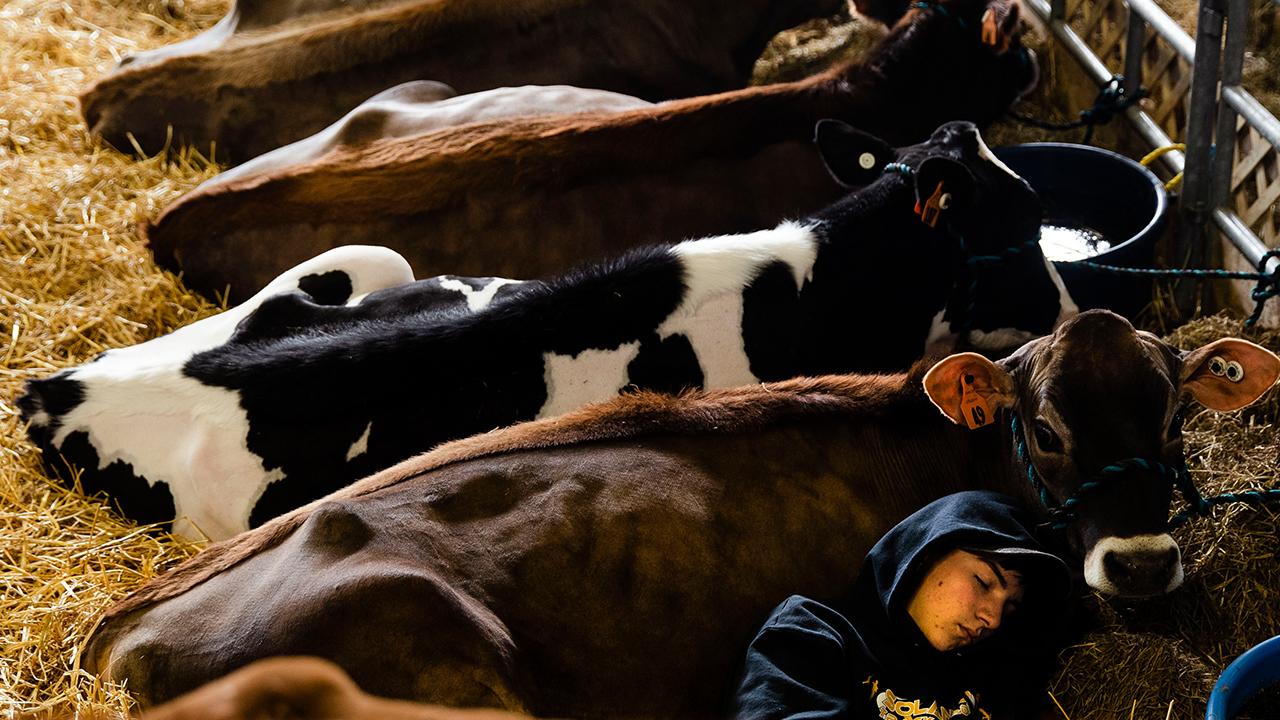Dairy farmers facing crisis as milk consumption, prices decline
A smaller number of larger farms are producing the bulk of the nation’s fluid milk amid consolidation in the industry
As the 2020 election approaches, candidates are focusing heavily on farmers in the middle of the country as the nation’s dairy sector is struggling.
While prices have declined, farms have shuttered and a smaller number of larger farms are producing much of the country’s fluid milk as more Americans are switching to dairy alternatives.
According to data from the National Family Farm Coalition, farmers are paid $1.45 on average per gallon of milk. It costs them $2 to produce that gallon. Prices have fallen nearly 40 percent over the past five years. Regional milk prices are set by the USDA.
As a result, farmers produce more milk, which results in more supply – at a time when demand is declining.
US DAIRY FARMERS LOOK TO TECHNOLOGY IN FIGHT TO SURVIVE
3 WAYS DAIRY FARMERS ARE GOING TO DO BETTER IN 2020
Milk production in the U.S. has increased throughout recent years, to nearly 206.7 billion pounds in 2018 – as milk per cow has continued to rise, according to data from the U.S. Department of Agriculture.
However, Americans' shifting taste preferences are leading to a decline in fluid milk consumption.
In 2018, the average person consumed 146 pounds of milk, compared with 247 pounds in 1975.
“The long-term problem for dairy is that consumer preferences are changing. U.S. consumption of milk has plunged and ice cream is down,” Chris Edwards, director of tax policy studies at the Cato Institute and editor of www.DownsizingGovernment.org, told FOX Business. “Ultimately, dairy businesses need to adjust to these new market realities, just as businesses in other dynamic industries adjust, such as those in retail, automobiles, energy, and technology.”
One of the largest fluid milk processors in the U.S, Dean Foods, filed for bankruptcy at the end of last year, citing decreased demand for milk.
Consequently, farms are having a hard time staying afloat amid consolidation in the industry.
GET FOX BUSINESS ON THE GO BY CLICKING HERE
The number of farms with dairy cows fell to 75,000 in 2006, from 648,000 in 1970. That’s an 88 percent decline, according to the USDA.
According to Bloomberg, the nationwide rate of dairy closing increased to nearly 7 percent in 2018.
Over the same time period, total dairy cows fell to 9.1 million from 12 million.
In Wisconsin, one of the biggest dairy-producing states, the number of milk cow herds has declined by more than half from August 2003 through February 2020.
However, production per cow has doubled.
Small dairy farms (fewer than 30 cows) – which accounted for 30 percent of all operations with milk cows – produced just 1 percent of total dairy production. The USDA noted that those operations have been disappearing “rapidly.”
The number of farms with between 30 and 200 cows declined by 30 percent between 200 and 2006, alone. However, farms with a large number of cows have increased and are now responsible for the bulk of the nation’s dairy production.
Another factor affecting farmers has been ongoing trade wars between the U.S. and multiple trading partners – which has resulted in tit-for-tat tariff escalations in some cases. Mexico, for example, had placed a 25 percent tariff on American cheese. Retaliatory tariffs by China and Mexico were estimated to be capable of lowering U.S. dairy exports by $2.7 billion over the course of several years – depressing farmers’ revenues by $16.6 billion. Losses for 2018 alone were pegged at $1.5 billion.
However, the Trump administration’s recently approved trade deals – including a phase one agreement with China and an upgraded deal with Mexico and Canada – may prove to be a bright spot for benefit farmers, including those in the dairy industry.

